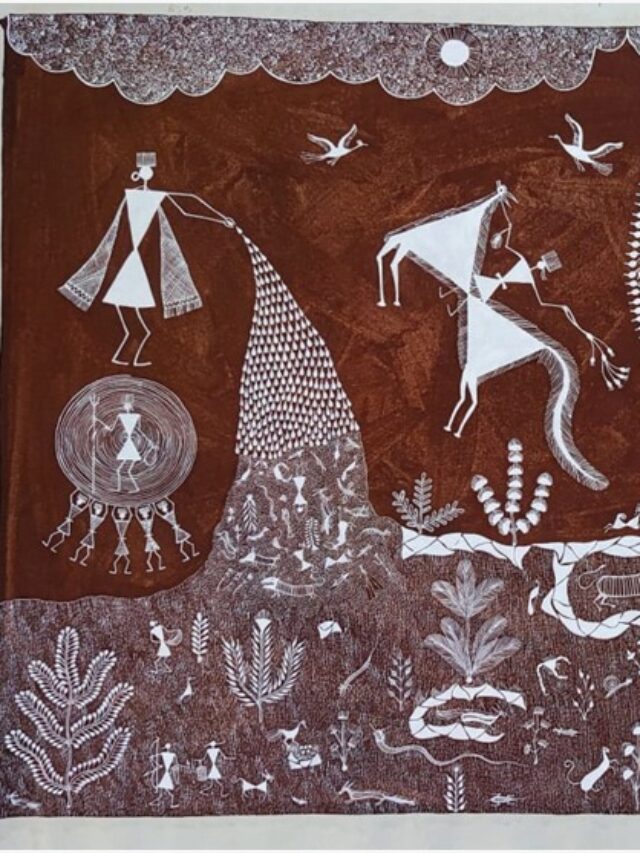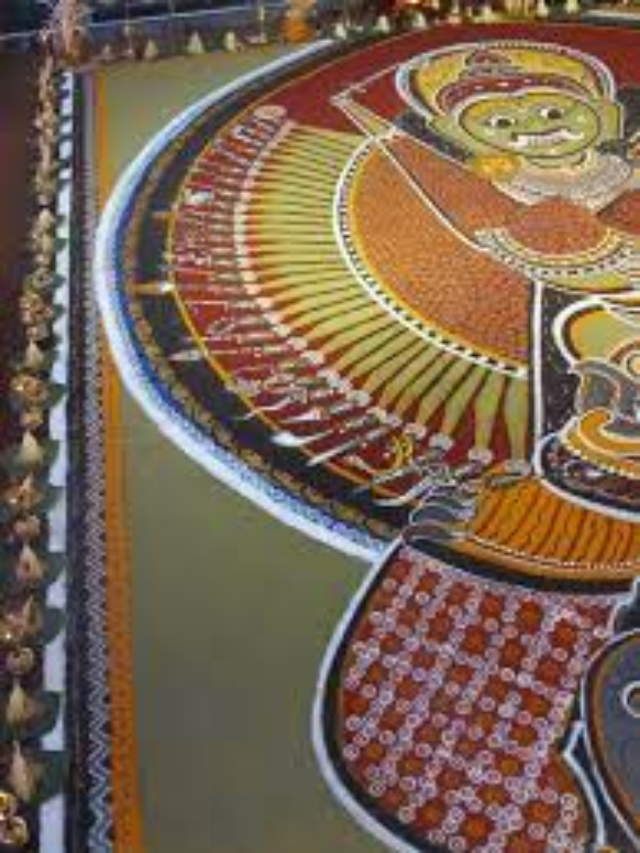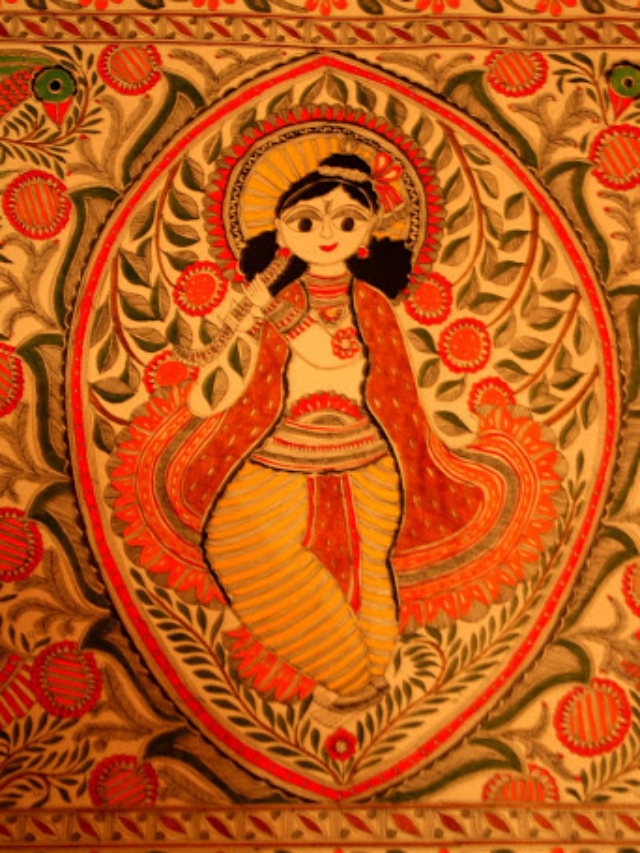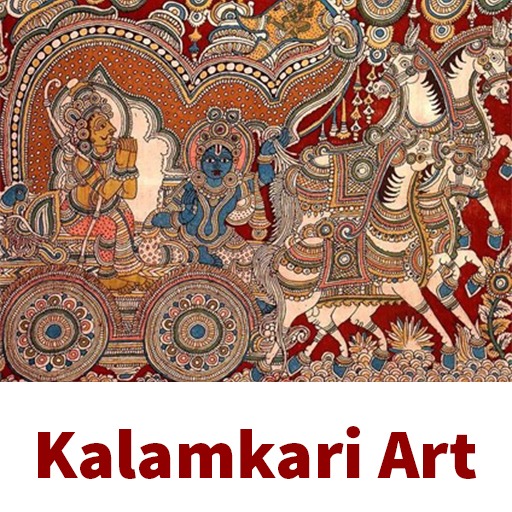Kalamkari art dates back to ancient times. It is an Indian traditional style of hand painting using natural dyes and tamarind pens, made on a tightly stretched cotton or silk cloth. It is a generational and eye-catching art form.
Kalamkari art is practiced with distinct styles in two prominent regions in Andhra Pradesh. Anyone who has seen its glory is captivated and enamored by its intricacy and beauty. The art became popular because of its details, shapes, themes, choice of colors, and fine lines. All of these features make this art timeless.
‘kalamkari’ art is derived from the Persian word ‘kalam,’ meaning ‘pen,’ and ‘Kari,’ meaning artisanship. The making of this art involves 23 meticulous steps of painting, dyeing, bleaching, stretching, block printing, cleaning, and more.
The designs made in this art form are flowers, animals like peacocks and elephants, symbols of deities, epic scene patterns, and sublime characters from the great Hindustanis epics like Ramayana and Mahabharta. Today, this art is extensively used to create kalamkari sarees and fabrics.


Origin of Kalamkari art:
In ancient times, folk singers and artists traveled across the villages and told stories of Hindu mythology to the villagers. Over time, however, the tradition of storytelling developed in canvas painting; this is the point when the art of kalamkari first appeared.
This dynamic art form spans more than 3000 B.C. Historians discovered specimens of fabric exhibiting kalamkari art at archeological sites in Mohenjo-Daro.
However, this style of painting gained popularity during the Mughal period. The Mughals popularized the art in the provinces of Golconda and Coromandel, where it was practiced by skilled artisans (called Qalamkars). The terms art and kalamkari originated as a result.
The art originated in MachiliPatnam in the Krishna region of Andhra Pradesh during the Golkonda Empire. It was encouraged by the British in India during the 18th century as a beautiful pattern on cloth. Many families in Andhra Pradesh still perform this craft, which has provided them with a primary source of income for decades.
Process of making Kalamkari art
Creating a kalamkari art is as complex as the delicate and magnificent image, including the 23 laborious stages. Before starting, the artist collects the following essential ingredients: cotton fabrics, dried raw fruits, milk “Mordant,” charcoal sticks, black currant liquid, alum solution, and natural dyes red, indigo and yellow. The method of kalamkari art is described in detail below.
- Cotton is first prepared to absorb dyes, so it is washed to remove starch, dried completely in the sun, and then coated with mordant as a binding agent.
- The artist then draws a basic image with charcoal sticks and sketches it with a sharp-edged kalam dipped in liquid. The kalam is covered in wool, which contains the liquid, so the artist squeezes the wool during painting to get the ink out.
- Once the black pattern is set, the artist can apply the alum mordant to the material and start introducing red.
- After a few more washing and drying cycles, the painting is painted with indigo and yellow. Orange color is produced by applying yellow to red areas, and green color is created by using indigo dye on yellow spots.
The overall process takes several days as the fabric and ink must be completely dry between the steps. But, in the end, time and work are worth it because the finished colors are vibrant and beautiful, and the images are captivating in their depth and complexity. Kalamkari is a work of love of art, tradition, and culture, and it appears in every painting.
Kalamkari fabrics and sarees
The kalamkari sarees highlight the extraordinary artistry of Indian artists. It is a beautiful combination of beauty and antiquity, and recent trends. These sarees are made in different designs and fabrics. Because natural colors and dyes are used, they do not fade with washing.
Kalamkari sarees are ideal for women who are looking for beauty and sophistication. The kalamkari art on the cotton and silk sarees gives a different look. Block patterned kalamkari silk sarees are easy and comfortable to wear. Since hand washing can shrink the fabric, dry or petrol washing is recommended for best results.
Kalamkari designs enhance your natural beauty. Even though they are traditional sarees, their value has not diminished in the current fashion business. The combination of kalamkari gives the fabric a perfect look.
Cotton, crepe, designer wear, printed sarees, silk sarees, georgette, chiffon, patchwork, Chanderi, and Kerala Kasavu sarees are popular.
Conclusion:
India is a land of many art forms, and it is tough to keep an eye on them all. However, kalamkari’s exquisite and daring art is still popular, thanks to the art of meeting design in the form of kalamkari sarees, carpets, hand towels, paintings, door covers, and bed covers, dress material, etc.
To be a favorite of designers as they redefine the style of modern fashion, even in calligraphic ethnic clothing and western designs. With its beautiful complexity and detail, the use of natural colors and patterns attracts lovers of traditional and nova fashion alike.
For more posts like this visit Tribal Handcrafts blog.
FAQs
How to identify that the kalamkari art is original?
Screen and digitally crafted kalamkari look flawless, but actual handmade paintings have irregularity and minor stains since artists hand-painted them. The irregularity and roughness of true kalamkari add to its charm.
Are kalamkari designs handmade?
Kalamkari patterns are often made with the freehand using the pen, and the filling is also done entirely by hand. Kalamkari art is usually created with natural dyes such as mustard, indigo, rust, green and black.
Which cities are famous for Kalamkari?
Srikalahasti is where the art is mainly practiced. It is a scenic town in the Chittoor district of Andhra Pradesh, nestled on the banks of the Swaranmukhi River. The area is roughly 30 kilometers from Tirupati, a primary pilgrimage site.






